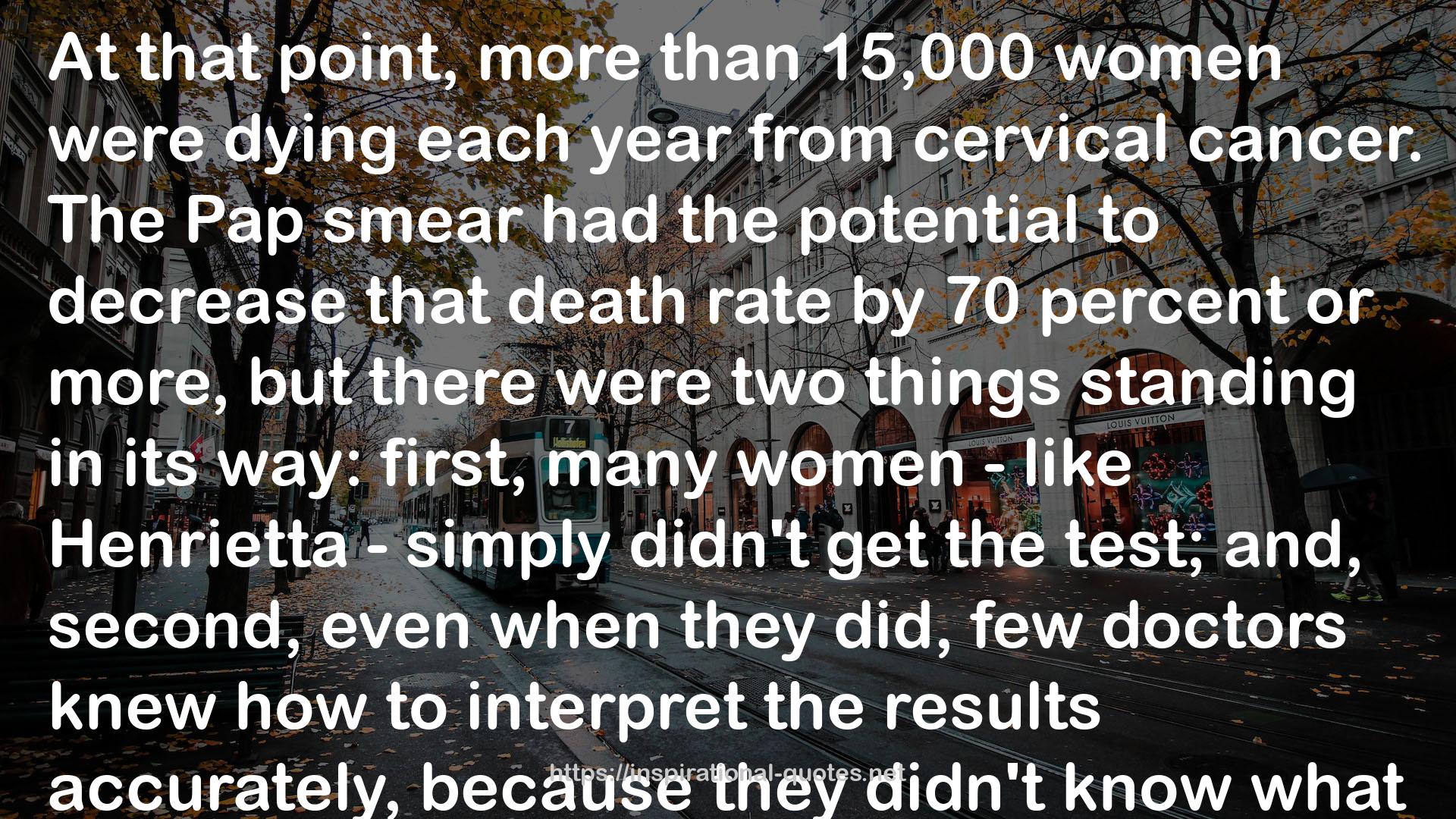" At that point, more than 15,000 women were dying each year from cervical cancer. The Pap smear had the potential to decrease that death rate by 70 percent or more, but there were two things standing in its way: first, many women - like Henrietta - simply didn't get the test; and, second, even when they did, few doctors knew how to interpret the results accurately, because they didn't know what various stages of cervical cancer looked like under a microscope. Some mistook cervical infections for cancer and removed a woman's entire reproductive tract when all she needed was antibiotics. Others mistook malignant changes for infection, sending women home with antibiotics only to have them return later, dying from metastasized cancer. And even when doctors correctly diagnosed precancerous changes, they often didn't know how those changes should be treated. "
― , The Immortal Life of Henrietta Lacks: Young Adult Edition
